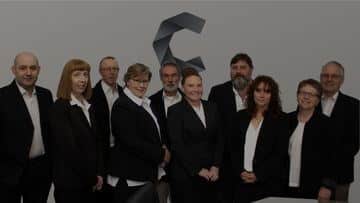Our experts have compiled a short summary of all the recent changes to the R&D tax incentive to help you stay in the loop.
Table of Contents
Federal Budget update
R&D Tax update
No major changes were proposed to the R&D tax incentive in the 2022 Federal Budget, which is both encouraging and relieving.
After nearly a decade of uncertainty around the program, it appears that the importance of innovation and R&D is now being recognised at a federal level.
The raft of changes proposed in the 2021 budget will now come into effect for FY22 R&D claims – more detail on this below.
Patent Box Scheme
The ‘Patent Box’ scheme announced in last year’s Budget includes a concessional tax rate of 17% (rather than the normal 25% or 30% tax rate).
The legislation is currently before Parliament, and it has now been extended to patents linked to agriculture and low emissions technology from 1 July 2023.
This is on top of the medical and biotech patents, granted after 11 May 2021.
Export Market Development Grant (EMDG)
Austrade’s EMDG program is designed to support export-ready Australian businesses as they establish themselves in international markets.
In this year’s Federal Budget, an additional $100 million in funding has been proposed to expand the program to provide financial support to existing regional and rural small to medium-sized exporters affected negatively by significant global impacts. This adds to the $80 million for EMDG announced in December 2021 and it will go a long way to supporting the increased popularity of the program in recent years. 1
Investment in collaboration and innovation in the university research sector
To bring universities and industry together, a $2.2 billion University Research Action Plan was announced in February. This initiative is to improve the development of the next generation of Australian companies and products. The Plan includes:
- $1.6 billion to kickstart Australia’s Economic Accelerator, a competitive funding program to support research projects with high commercial opportunities.
- $150 million to expand CSIRO’s Main Sequence Ventures which will make venture capital investments in companies linked to Australian research and development.
- $243 million to support select universities to boost priority research and development.
Digital Games Tax Offset
As part of Australia’s ‘digital economy’ strategy, announced in last year’s Budget, a new digital games tax offset was announced. The digital games tax incentive will provide a 30% refundable tax offset, to support video game development in Australia.
The offset will start from 1 July 2022 and there will be a minimum spend threshold of $500,000.
R&D uplift tax rate
From 1 July 2021, eligible R&D entities will receive an ‘R&D uplift’ at a fixed percentage above the entities’ company tax rate.
There are now three ‘tiers’ of R&D uplift, based on aggregated turnover and ‘R&D intensity’:
Aggregated turnover |
R&D intensity |
R&D net benefit |
|---|---|---|
| < $20 Million | N/A | 18.5% 1 |
| $20 Million or above | < 2% 2 | 8.5% |
| $20 Million or above | 2% or above 2 | 16.5% |
1 The 18.5% uplift will be in the form of a refundable tax offset. This may result in the entity receiving up to 43.5% of R&D expenditure as cashback depending on their taxable position.
2 ‘R&D intensity’ is calculated as a portion of R&D expenses over total company expenses. This measure is only applicable to entities with an aggregated turnover of $20 million and above.
Temporary full expensing
The ‘temporary full expensing’ provisions enable eligible businesses to claim an immediate deduction for the cost of an asset in the year it is first installed and ready for use. These provisions were introduced as an economic stimulus measure through the pandemic and applied up to 30 June 2023.
Where companies are conducting R&D, these provisions can provide an avenue for companies to include accelerated deductions in their claims and can provide a very powerful “uplift” on expenditure incurred before 30 June 2023.
JobKeeper adjustments
Where a business has received JobKeeper payments in respect of an R&D employee, the R&D salary will need to be adjusted (reduced). This treatment has been confirmed in Tax Determination 2021/9.
JobKeeper adjustments were required in FY21 R&D claims and should be kept in mind when calculating the eligible expenditure for FY22.
Upcoming RDTI lodgment deadlines
FY22 advanced overseas findings
Companies that are unable to undertake their R&D activities in Australia (for example, due to a lack of access to a facility, expertise, or equipment) may still be eligible to claim, provided they have an Advanced Overseas Finding in place.
If your company intends to claim the overseas R&D expenditure during FY22, you must lodge an overseas finding application with AusIndustry by 30 June 2022.
FY22 R&D claims
There’s nothing better than being prepared. If you’re wanting to lodge a claim for the 2021-22 financial year, get in early to avoid compliance headaches.
AusIndustry announced in December 2021 that the previous three to ten working day turnaround on approving newly lodged R&D Tax registrations had been scrapped and now the official maximum processing time allowed is now 40 working days. 2
Needing further assistance?
If you have any questions about the recent changes to the R&D tax incentive or about making a claim, our R&D and Grants specialists are on hand to help. The R&D tax incentive is not just a one-time influx of cash but a grant you can claim more than once, so get in touch with us to kick off a conversation.





















